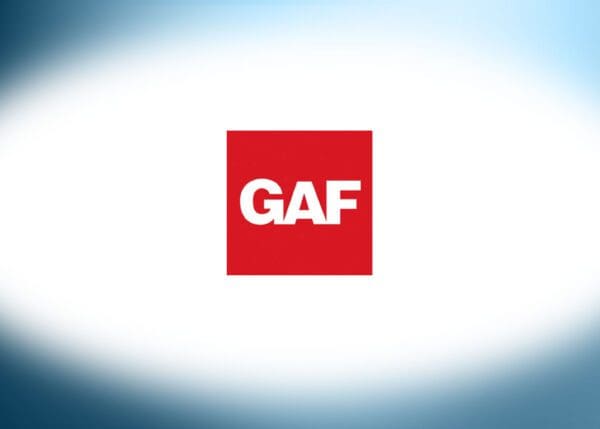01. History of Asbestos Use
GAF Corporation History of Asbestos Use
GAF Corporation’s origins had German roots, as the company was an American branch of the German company I.G. Dyes. I.G. Dyes first acquired General Aniline Works and Agfa-Ansco Corporation before General Aniline and Film (GAF) was formed. GAF’s business growth was stunted during World War II when the company was seized by the United States federal government due to its German affiliations.
Once GAF was released from its seizure, it began to quickly expand its product offering, spanning across many different construction products. Part of this expansion included their acquisition of Ruberoid Corporation in 1965. Ruberoid was a roofing supplies manufacturer that was known as GAF Materials Corporation after its acquisition before the company legally changed its name to GAF Corporation in 1968.
Records show that GAF products continued to contain asbestos through 1981.
GAF became responsible for Ruberoid’s operations, which included the largest asbestos mine in Virginia. Asbestos was mined and incorporated into their products, popular because it was easily accessible and cost-friendly. GAF relied heavily on the use of asbestos throughout all of their product lines and didn’t cease use of the asbestos mine until 1975. Similar to many other asbestos companies, GAF Corporation saw much of their success in the mid-1980s during an increase in housing construction.
Resources for Mesothelioma Patients
02. Asbestos Products
GAF Corporation Asbestos Products
Construction products produced throughout the mid-1900s were likely to contain asbestos. One of the most beneficial properties of the mineral was that asbestos offered weather-resistance, ideal for roofing, decking and other outdoor products. The fireproofing capabilities of asbestos were also ideal for flooring, walls and other structures susceptible to fire damage.
Some of GAF Corporation’s products continued to contain asbestos until 1982. Today, GAF’s product line focuses on roofing products for both residential and commercial purposes.
03. Occupational Exposure
GAF Corporation and Occupational Exposure
Through Ruberoid’s acquisition, GAF was responsible for miners’ asbestos exposure. In working with large quantities of asbestos on a frequent basis, miners have been very susceptible to developing asbestos-related illnesses, like malignant mesothelioma.
In addition to miners, GAF also was responsible for the exposure of its workers and consumers. Construction workers, insulation workers and those installing, repairing and removing their materials could have come in contact with the mineral.
04. Asbestos Litigation
Asbestos Litigation Against GAF Corporation
The dangers of asbestos became known as early as the 1930s. Throughout the mid-1900s, cases of mesothelioma, asbestosis and other diseases were growing, and legislation was being put in place to limit asbestos risk. Many asbestos companies chose to prioritize profits instead of worker and consumer health, including GAF Corporation.
By 2005, GAF was named in 500,000 asbestos claims.
The Ruberoid asbestos mine was not closed down until 1975, and GAF products produced through 1981 contained asbestos. Miners, workers, and consumers have filed claims against GAF Corporation for the past few decades, seeking compensation for their asbestos diagnoses and related suffering.
By 2005, GAF, together with G-I holdings, had paid over $750 million to asbestos victims in just seven years. G-I Holdings remained responsible for around 150,000 asbestos lawsuits that had been filed or were expected to be filed. To accommodate the growing number of claims, G-I Holdings, GAF’s parent company, filed for Chapter 11 bankruptcy in 2001. They were also required to set up an asbestos trust fund to pay out current and future claims.
05. Asbestos Trust Fund
GAF Asbestos Trust Fund
GAF Corporation’s asbestos trust fund is set up through their parent company, G-I Holdings, and is referred to as the G-I Holdings Inc Trust. The trust was created in 2009 in the company’s plan to reorganize. It began accepting claims in 2010 and continues to accept claims today.
The current payment percentage for successful claims is 5%.
Like other asbestos trust funds, GAF pays out asbestos claims using a set payment percentage to guarantee funds for future claims. The current payment percentage is 5%, but the amount a claimant is compensated can vary. Payout numbers reflect base-level values, and the actual values may be different based on many different factors. Factors include, but aren’t limited to, age, exposure, type and firm settlement history. Those interested in filing a claim should consult with a mesothelioma lawyer to fully understand their options.




